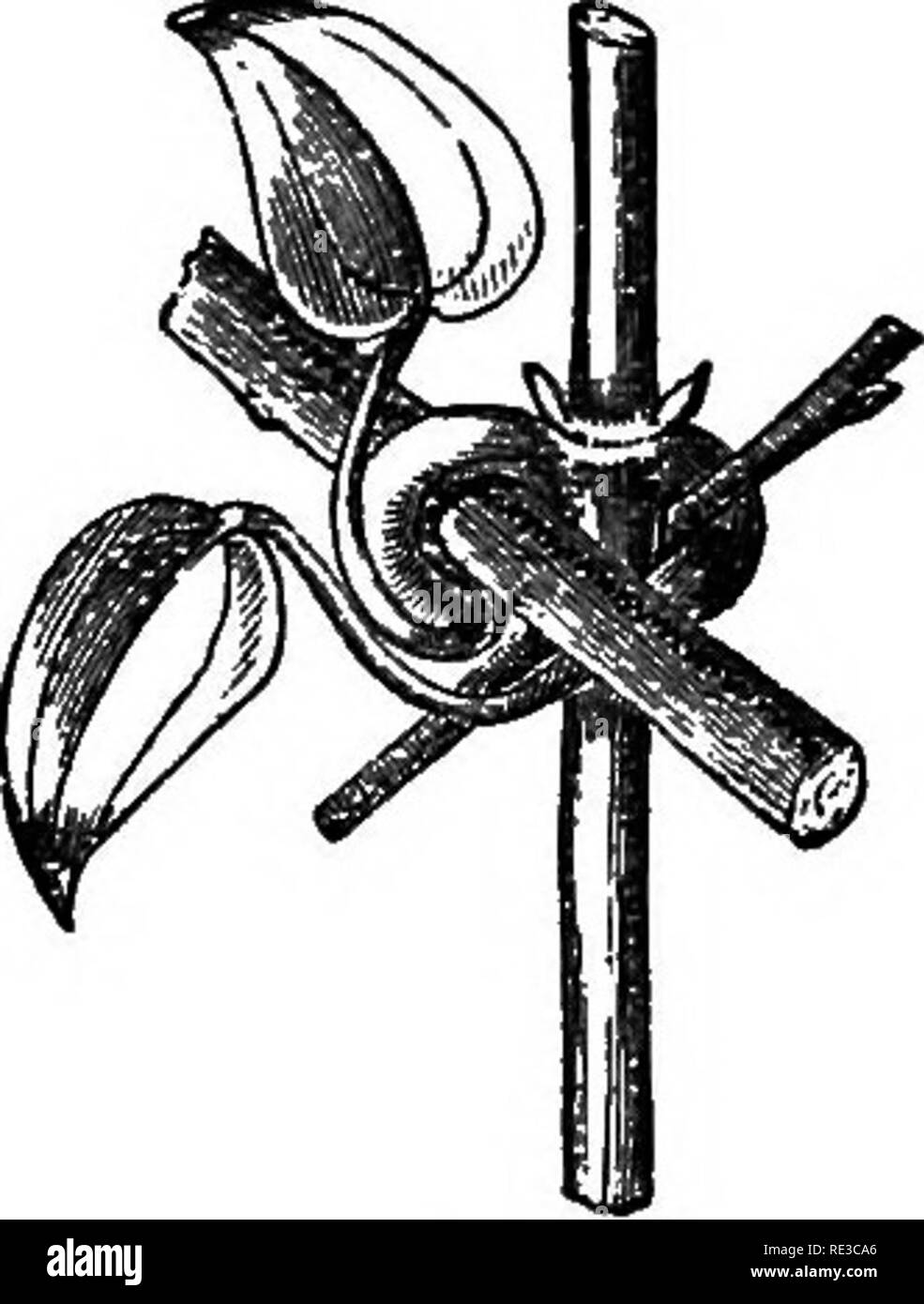. The movements and habits of climbing plants. Climbing plants; Plants. Chap. II. CLEMATIS. 47 footstalk caused it, in 12 hrs., to bend greatly, and ultimately to such an extent that the leaf passed to the opposite side of the stem; the forked stick having been removed, the leaf slowly recovered its former position. The young leaves spontaneously and gradually change their position: when first developed the petioles are upturned and parallel to the stem; they then slowly bend downwards, remaining for a short time at right. Fig. 1. Clematii glavdujosa. With two youDg leaves clasping two twigs,

Image details
Contributor:
The Book Worm / Alamy Stock PhotoImage ID:
RE3CA6File size:
7.2 MB (215.1 KB Compressed download)Releases:
Model - no | Property - noDo I need a release?Dimensions:
1377 x 1816 px | 23.3 x 30.8 cm | 9.2 x 12.1 inches | 150dpiMore information:
This image is a public domain image, which means either that copyright has expired in the image or the copyright holder has waived their copyright. Alamy charges you a fee for access to the high resolution copy of the image.
This image could have imperfections as it’s either historical or reportage.
. The movements and habits of climbing plants. Climbing plants; Plants. Chap. II. CLEMATIS. 47 footstalk caused it, in 12 hrs., to bend greatly, and ultimately to such an extent that the leaf passed to the opposite side of the stem; the forked stick having been removed, the leaf slowly recovered its former position. The young leaves spontaneously and gradually change their position: when first developed the petioles are upturned and parallel to the stem; they then slowly bend downwards, remaining for a short time at right. Fig. 1. Clematii glavdujosa. With two youDg leaves clasping two twigs, with the clasping portions thickened. angles to the stem, and then become so much arched downwards that the blade of the leaf points to the ground with its tip curled inwards, so that the whole petiole and leaf together form a hook. They are thus enabled to catch hold of any twig with which they may be brought into contact by the revolving move- ment of the intemodes. If this does not happen, they retain their hooked shape for a considerable time, and then bending upwards reassume their original upturned. Please note that these images are extracted from scanned page images that may have been digitally enhanced for readability - coloration and appearance of these illustrations may not perfectly resemble the original work.. Darwin, Charles, 1809-1882. New York, D. Appleton and Co.